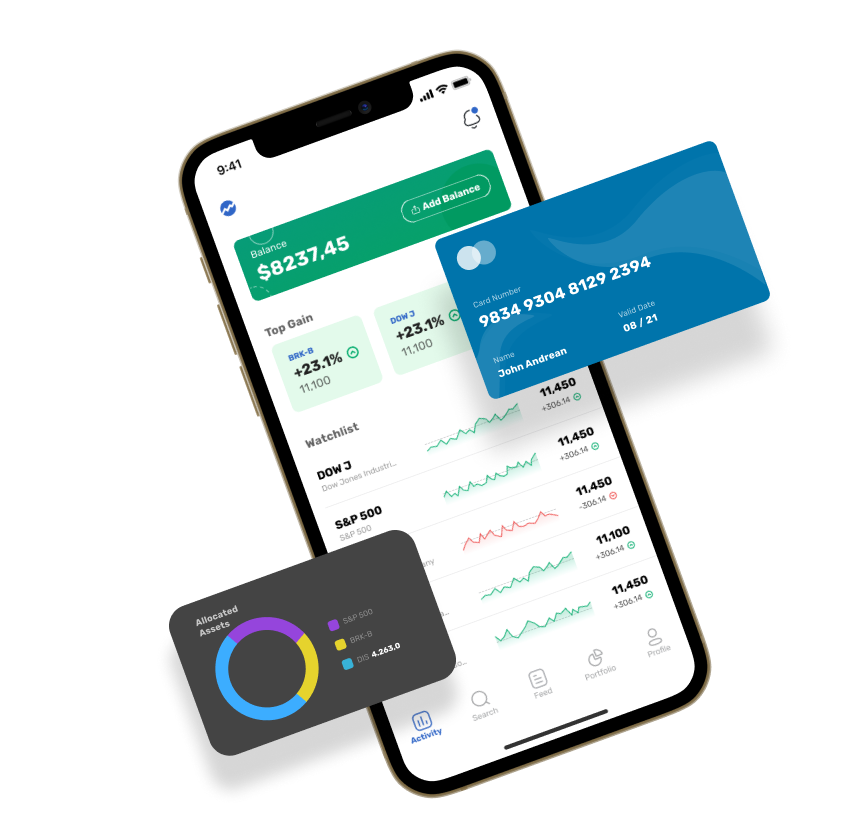20 Good News To Selecting AI Stock Investing Analysis Sites
20 Good News To Selecting AI Stock Investing Analysis Sites
Blog Article
Top 10 Tips On Pricing And Costing Of Ai Stock Analysing Trading Platforms
Assessing the cost and pricing of AI stock predicting/analyzing trading platforms is essential to ensure that you are getting the most value from your investment without incurring hidden costs or unexpected expenses. Pricing structures can vary greatly and it is crucial to know what you are getting for the amount you pay. Here are the top 10 tips to evaluate the cost and pricing of these platforms:
1. Learn more about the pricing structure
Subscription: Be sure to check if a platform charges an amount per month or year and what's included with each stage.
Pay-per-Use: Check if the platform charges on usage (e.g. amount of trades completed and data requests made, or forecasts).
Freemium Model: Examine whether the platform offers a free version which offers the most basic options. The premium features are paid for.
2. Compare Pricing Tiers
Overview of features: See what features are included in each price level (e.g., basic, professional, or enterprise).
Scalability: Ensure that the pricing levels align with your requirements, whether you're an individual trader or a professional.
Upgrade flexibility: Discover if you are able to easily upgrade or downgrade when your needs change.
3. Evaluate Hidden Costs
Data fees - Determine if the platform charges an extra cost to access high-end information (e.g. information in real-time, advanced analytics).
Brokerage fees: Check whether the platform is charging additional fees for trade execution or integration with brokers.
API usage. Check if any additional costs are incurred due to API access or frequent API usage.
4. Demos as well as Free Trials, and Test Drives
Trial period: Check out platforms that give you a no-cost demo or trial to try out their features.
Trial limitations: Check if the free trial includes all of the features, or if it is restricted in functionality.
No-commitment option If you do not like the platform, you can unsubscribe at any time without cost.
5. Look for discounts and promotions.
Annual discounts: Find out whether the platform offers discounts for annual subscriptions as compared to the monthly plan.
Referral programs - See whether there are any discount or credits that you can use to refer new users.
Pricing for institutions In the event that you are part of an organization that is larger, ask about pricing for bulk orders or institutions.
6. How do you assess return on investment (ROI).
Cost vs. value - Determine whether the features, predictions and cost are worth the investment. Do you have time saved or make better decisions in trading?
Performance track record: Look at the platform's rates of success or user reviews to gain an understanding of its ROI potential.
Costs of alternative platforms: Compare the cost of the platform to the potential cost of not making use of it (e.g. not utilizing opportunities, manual analyses time).
Review Cancellation Policy Policies for Review
You should be able to end your subscription at any time, without paying any fees or penalties.
Go through the policy on refunds to see if you can get an amount of money back for any unredeemed subscription portion.
Auto-renewal. Find out if the platform will automatically renew your account. If it does, you'll need to know how to unsubscribe.
8. Pricing should be transparent
A clear price page Make sure that your platform provides a thorough and up-to-date pricing page that is free of hidden charges.
Customer support Contact support at customer service to provide clarification on any pricing issues or additional costs.
Contract Terms: Read the conditions of service for any penalties or long-term agreements.
9. Compare with Competitors
Comparing features and pricing of the platforms against those of their competitors will help you get the best deal.
User reviews: Study reviews from users to determine if others feel the platform is worth the investment.
Market positioning: Take a look at the pricing and see if you are receiving a platform compatible with your needs.
10. Examine the Long-Term Costs
Price increases: Take a look at the past history of the platform and see how frequently it increases prices.
Updates to features: See if your current plan includes new features or requires an upgrade.
Costs of scaling: Make sure the pricing of your platform is fair when you expand your data or trading requirements.
Bonus Tips
Try a variety of platforms. Compare the capabilities and benefits of various platforms by testing their capabilities during free trials.
Offer prices to negotiate: If you have many customers or belong to an organization, you can ask for discount and pricing that is custom to your needs.
Look for free educational tools and resources. Some platforms provide tools for education or resources for free.
If you follow these guidelines You can easily evaluate the price and cost of AI platform for predicting and analyzing stocks make sure you select one that is within your budget and delivers the features and performance you want. A reputable platform will provide the right balance between affordability and functionality, helping you achieve the best results from your trading. View the top rated stock ai blog for blog recommendations including ai stock trading, ai trading, ai investing, stock ai, best ai stock, ai investing platform, ai stocks, best ai for trading, using ai to trade stocks, ai stock trading app and more.
Top 10 Tips On How To Assess The Credibility Of Ai Stocks Predicting/Analyzing Trading Platforms
It is crucial to evaluate the reputation and reviews for AI-driven trading and stock prediction platforms in order to ensure their reliability, trustworthiness and effectiveness. Below are the top 10 methods to analyze the reputation and reviews.
1. Check Independent Review Platforms
Find reviews on reliable platforms, like G2, copyright and Capterra.
What is the reason? Independent platforms permit users to give an honest and objective feedback.
2. Examine case studies and user reviews
You can find user testimonials or case studies by visiting the platform's own website, and also on third-party sites.
Why: These metrics provide insight into the real-world performances and satisfaction of users.
3. Assess Expert Opinions & Industry Recognition
TIP: Check to determine if the platform was approved or reviewed by experts in the field, financial analysts, or reputable magazines.
Expert endorsements are an excellent way to boost credibility and trustworthiness to a platform.
4. Social Media Sentiment
Tip: Monitor the social media sites (e.g., Twitter, LinkedIn, Reddit) for the opinions of users and discussions about the platform.
Social media lets you get the honest opinions of users and trends.
5. Verify Compliance with Regulatory Regulations
Check if you platform complies the financial regulations (e.g. SEC, FINRA) as well as privacy regulations (e.g. GDPR).
The reason: Compliance is essential to ensure that the platform functions legally and ethically.
6. Find out if performance metrics are transparent. measures
Tip : Check if the platform has transparent performance metrics.
Transparency encourages confidence and allows users of the platform to evaluate the effectiveness of the platform.
7. Verify the quality of customer support.
Read the reviews to get information about customer service and its efficiency.
Why: For a positive experience for the user, it's important to have reliable assistance.
8. Red Flags are a good indicator of a bad review
Tips: Be aware of complaints that are recurrent like poor service, hidden charges, or a lack of new features.
Why: Consistently negative feedback could indicate problems on the platform.
9. Study user engagement and community
Tips: Make sure the platform has an active community of users (e.g. forums, forums Discord groups) and interacts with its users regularly.
The reason: Strong communities show that users are satisfied and continue to show support.
10. Find out the track record of the company.
You can find out more about the company by studying its history as well as its management team and its performance in financial technology.
Why? A documented track record can increase confidence in the platform’s reliability and experience.
Compare Multiple Platforms
Compare the reputations and ratings of various platforms to identify which one is the most appropriate to your needs.
With these suggestions, you can thoroughly assess the reviews and reputation of AI trading and stock prediction platforms. You should make sure that you choose an efficient and reliable solution. See the recommended ai investment tools for website tips including best ai penny stocks, ai in stock market, best ai stocks, best ai for stock trading, ai share trading, best ai stocks to buy now, ai investment tools, how to use ai for copyright trading, best ai penny stocks, how to use ai for copyright trading and more.